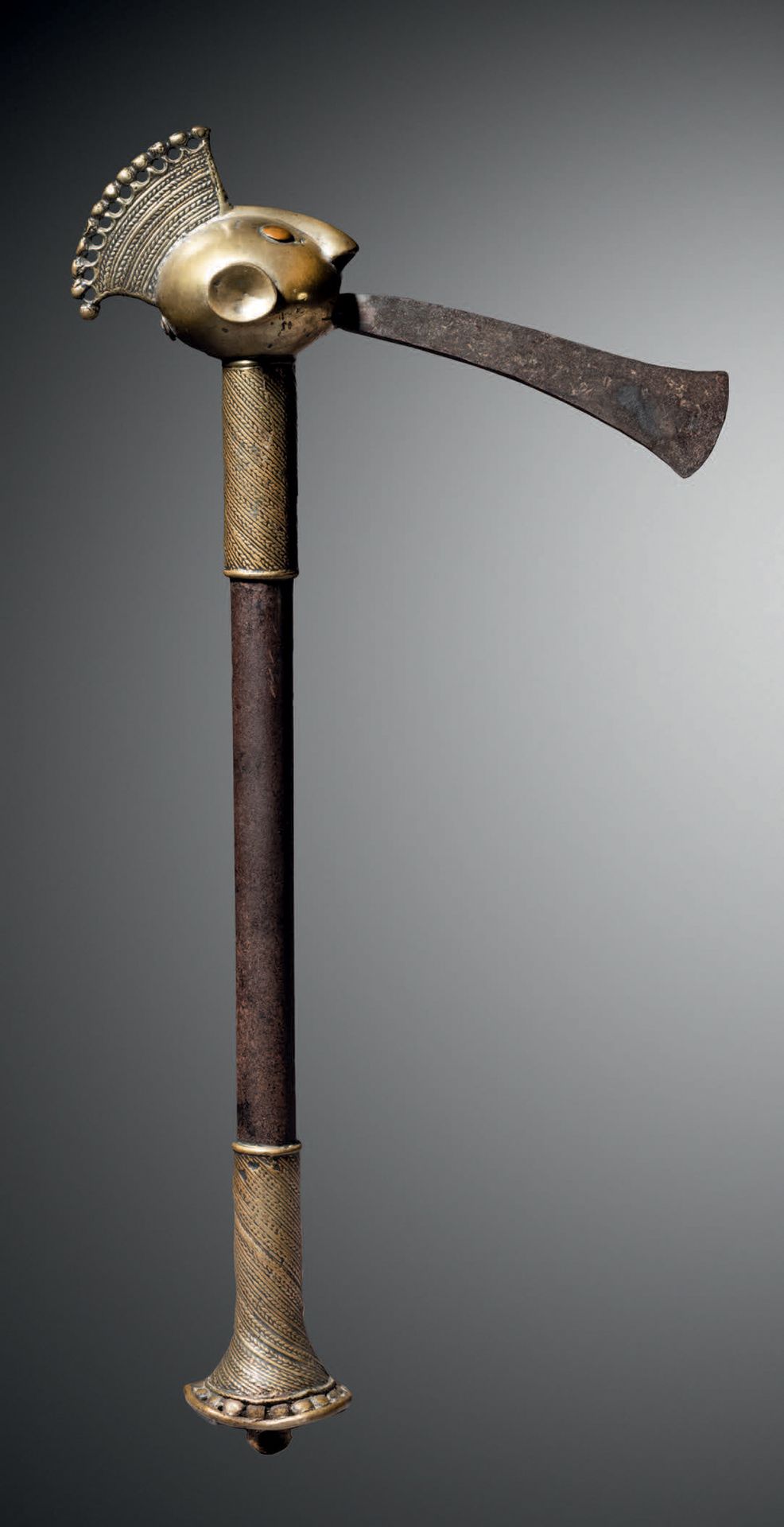Description
Ɵ Tiv Sceptre, Nigeria Presumed period: 1850 - 1900 Iron, brass and copper H. 48 cm - L. 23.5 cm Tiv Ceremonial Adze, Nigeria H. 19 in - L. 9 ¼ in Provenance: - Hélène and Philippe Leloup, Paris - Private collection The handle is made of iron, perhaps the barrel of an old gun. It is decorated with a pommel and a finely chiselled ovoid head. The details are of great precision, the copper eyes are added. Ɵ This lot is in temporary importation
37
Ɵ Tiv Sceptre, Nigeria Presumed period: 1850 - 1900 Iron, brass and copper H. 48 cm - L. 23.5 cm Tiv Ceremonial Adze, Nigeria H. 19 in - L. 9 ¼ in Provenance: - Hélène and Philippe Leloup, Paris - Private collection The handle is made of iron, perhaps the barrel of an old gun. It is decorated with a pommel and a finely chiselled ovoid head. The details are of great precision, the copper eyes are added. Ɵ This lot is in temporary importation
You may also like
